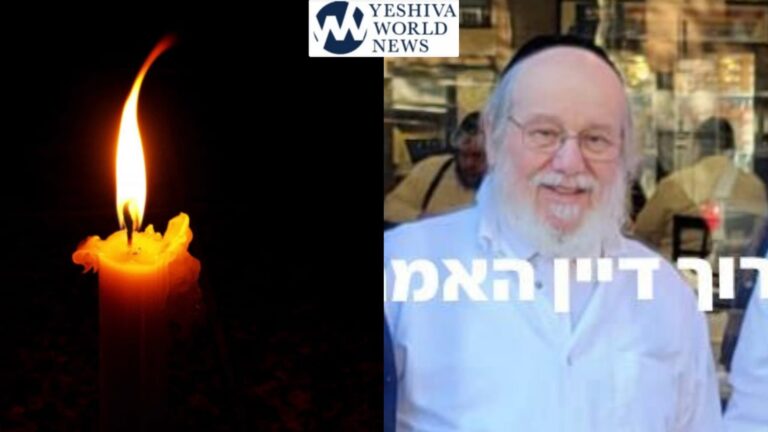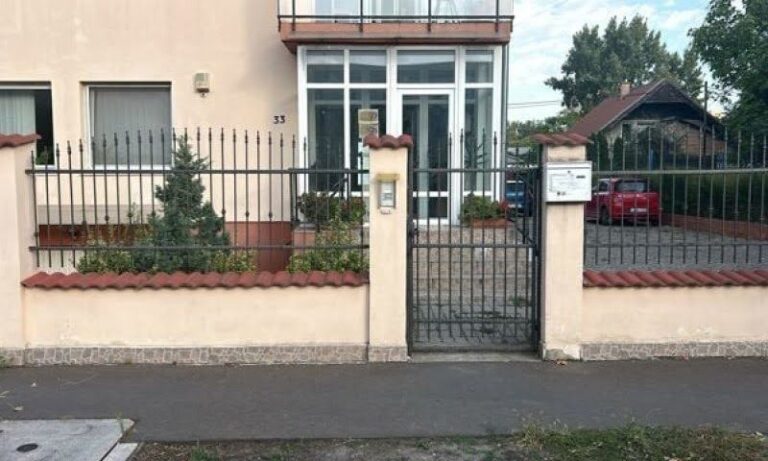 By Rabbi Yair Hoffman for the Five Towns Jewish Times
By Rabbi Yair Hoffman for the Five Towns Jewish Times
The Molad or “new lunation” is the calculation of when the new moon, on average, will appear in Jerusalem, Israel. Traditionally, the exact time is announced in shul between Shacharis and Mussaf before Rosh Chodesh Bentching. Here is a method of calculating the Molad by heart for the next century or more. Essentially, it involves memorizing two statements as well as a concept. We will begin with the two statements that must be memorized and then we will describe the concept.
Yes, the following two statements are bizarre, but they will help in the calculation. The idea of being able to calculate the Molad in any given month has been described as the “wisdom and understanding of the Jewish nation in the eyes of the gentiles.” It is a good thing to know.
FIRST STATEMENT
Back in Elul of ’75, I SAT 4 twenty-three minutes and ate.
That’s the first statement that needs to be memorized. So let’s just repeat it aloud again. Back in Elul of ’75, I sat 4 twenty three minutes and 8.
Now let’s discuss its meaning. It essentially is a means of memorizing when the molad was this past Elul of 5775. Elul 5775 will act as our point of origin or reference, when calculating all future Molads. It occurred on SATURDAY at 4:23 AM and eight Chalakim. One Chailek is 1/18th of a minute (3 and 1/3 seconds). A good way to remember the 23 minutes is that it is the Roshei Taivos of Cohain Gadol.
THE SECOND STATEMENT
Now the second statement that needs to be memorized:
Every month since then, every day and a ½, for 44 minutes I hadd one.
Since that is the second statement that needs to be memorized, let’s repeat it aloud again. Every month since then, every day and a half, for 44 minutes I ‘add one.
Now let’s discuss the meaning of this second statement. In order to calculate the day and time of any future Molad past that of Elul 5775, we add 1 day and twelve hours and 44 minutes and one more chailek for every additional month.
SIMPLE EXAMPLE
For example, if we just wish to calculate the molad for one month afterward, we add a day and a half to Saturday morning 4:23 AM, so we get Sunday afternoon at 4:23 PM. Then we add the 44 minutes, and we get Sunday afternoon at 5:07 PM. Now we just add one more chailek to the eight, and we get the Molad for Tishrei – Sunday afternoon 5:07 PM and nine chalakim.
MORE COMPLEX EXAMPLE
Now let’s say we wish to calculate the Molad for Elul of 5776 – next year, a full thirteen months forward (because 5776 is a leap year where we add an extra month of Adar.) So we multiply 1 and ½ by 13 and we get 19 and a half. Since we don’t care about the weeks here we subtract from this number any multiple of 7. So we are left with 5 and one half. We add 5 and a half days to Saturday morning and we get Thursday afternoon at 4:23 PM. Now we multiply 44 by 13 (which is 10 plus 3) and we get 440 plus 3 times 44 which is 120 plus 12 or 132. So the total minutes we add are 572 – which is 540 plus 32. Thus, we add nine hours and 32 minutes to 4:23 PM and we get 13:55 AM on the next day – Friday morning 1:55 AM. Now the last thing we do is add 13 chalakim to the 8 chalakim of Elul of 5775 and we get Friday Morning, 1:56 AM and 3 Chalakim.
THE CONCEPT
But how do we know when exactly we add an extra month? When we are calculating the Molad for, say, ten years hence, how can we take into account the extra leap months?
For this, it is best that we understand the following concept. Although in the non-Jewish secular calendar we generally have a leap year every four years, this is not the case in the Jewish calendar. The Jewish calendar has a 19 year cycle in which there are seven leap years.
We can call this calendar the Guach Luach, because the seven years are years 3, 6, 8, 11, 14, 17, and 19. [Three, six and eight are represented by the gimel vov and ches in Hebrew]. Each of those years in the 19 year cycle are leap years where an entire extra month of Adar is added. We do this to fulfill the Mitzvah of always celebrating Pesach in the spring (Shamor es chodesh HaAviv.)
The year 5757 was the 303rd completion of the 19 year cycle. This upcoming year, 5776 will be the 19th year of the 304th cycle. It is a leap year. You must keep the extra months in mind when calculating a future Molad that will take you into these leap years. What you can do is simply subtract 76 from the last two numbers of any future year and you will be able to determine which year in the 19 year cycle you are up to.
Some readers may think that this is complicated. It is not. If you would like to learn it, sit down with someone who is slightly mathematically oriented, and you will see that the calculations are in fact rather easy.
The author can be reached at [email protected]











21 Responses
To calculate the molad, look at the chart/calendar, found in shul’s, and read what it says. This isn’t something one does oneself.
What if one isn’t in shul? What if one’s shul doesn’t have such a chart? Why isn’t this something that you can do yourself? Will your own calculation effect Klal Yisroel? Will you transgress anything if you’re off by even a whole day? Shabbos and YomTov aren’t affected by the moled.
…and the molad isn’t the actual time when the new moon is visible, it’s an average. The actual molad can be many hours different.
The name Molad, came to be, because in the genrations before the 15th Century, everyone, including Chazal and early Rishonim like Rashi an Baalei Tosfos, believed that the moon gave off its own light.
That’s why they entertained the notion that at night the sun travels from west to east above a blanket called sky while the moon shines down on us.
Any apps?
ATTN # 4 (ader)
I believe you are mistaking (due to misinterpreting Chazal and Rishonim).
p.s.
I know that our holy sages were not infallible when it came to issues of science (albeit their words often carried deeper meanings) However, in celestial matters they were usually accurately knowledgeable. (although their explanations was frequently made metaphorically.)
theprof1 – “Shabbos and YomTov aren’t affected by the moled” – Completely incorrect.
Shabbos, of course, is not. Yom Tov is completely calculated by the Molad. If you know the Molad you can correctly calculate all the Yomim Tovim, if you know a few basic rules.
to 6
See Pesachim 94b and Rashi 24a 12th line, and many other places.
In their days everyone thought that the earth was flat and surrounded by water. They all thought that the moon has its own light as opposed to a reflection of the sun.
Ader:
Neither of those sources says anything about the moon having its own independent light.
And the Zohar states quite clearly that the moon has no light of its own, only what it reflects from the sun. Regardless of whether you believe that the Zohar goes back to Rashbi or you think it’s by R. Moshe de Leon, both of those predate your “15th century.”
@8 – While this is not the correct forum for these discussions (really need to be done face to face not online in periodic comments) you do realize that nothing in your sources says that the moon produces its own light.
I also am assuming that your second source was Meseches Rosh Hashana in Rashi there.
they werent du,mb and its just amyth and i saw a sefer clearly explaind the gemaros in bava basra about the sun
to 9 & 10
If Gemoroh entertains the notion that the sun travels, at night, above the non-transparent sky, and at the same time the moon is shining onto us from underneath that sky, than the moon has its own light.
Ader: who says the sky is non-transparent? Rambam writes (Yesodei Hatorah 3:1) that “all of the spheres are pure and clear, like glass or sapphire.”
And for another pre-15th century source about the moon’s light, there’s Rabbeinu Bechayei (commentary to Genesis 1:14-19 – http://www.hebrewbooks.org/pdfpager.aspx?req=24570&pgnum=11), who mentions that idea about transparent spheres and, immediately after, that “the light of the moon is drawn forth from that of the sun, since the moon has no light of its own, only from the sun’s light… like the heat of iron heated in a fire, where the heat doesn’t come from the iron, but from the fire which heats and from which the iron receives heat.”
The reason its dark at night is because the sun can not shine through the blanket called ‘sky’.
See the first Tosfos in Rosh Hashana 24a, and you’ll see that the cheshbbon can only stand if you hold that the moon is Not a reflection of the sun.
The later Rishonim like the Baal Hamo’or and Ramban and Rambam (only by the time he wrote the Moireh Nevuchim) did know.
See the Gemoroh about the Chesed that HKB”H did that the sun should never see the Levana’s dark side.
The Eben Ezra in the Hakdomo on Chumash clearly states that the Moon gets Extinguished towards the end of the month, and then gets ignited on Rosh Chodesh when it touches the Sun.
The Ma’haral is struggling terribly to try to understand the Gemoroh on Pesachim 94b. He even misquotes the words of the Gemoroh.
See the Rashash on the small Toisfos on Pesachim 94a and the Sfas Emes. They both write that Toisfos does not Shtim with the fact that the earth is a cylinder. The Sfas Emes remains puzzled.
Let’s take your sources in order.
First Tosafos on Rosh Hashanah 24a: states that the moon could conceivably “see” the concave side of the rainbow, but that’s during the day when its light isn’t useful to us anyway (“like a candle at midday”). What’s that got to do with whether the moon is thought to be an independent source of light?
“Rambam (only by the time he wrote the Moireh Nevuchim)”: what’s your source for the idea that he didn’t know this elementary fact when he wrote his earlier works, and that he did by the time he wrote M.N.? (And let it be noted that Rambam lived long before the 15th century; you still haven’t addressed the fact that your statement in comment #4 has been utterly disproved.)
“The Gemoroh about the Chesed…” – doesn’t tell us anything about whether they considered the moon to reflect the sun’s light. Suppose that the orbital mechanics were unchanged but half of the moon had a very low albedo, then the sun might well be able to “see the concavity of the moon.”
“The Eben Ezra” says no such thing in his introduction to Chumash. He simply says that the time from the molad until the moon is first visible is highly variable because of the variations in the sun’s and moon’s orbits. (Besides, if indeed he did say what you claim, then there you go – he also would be saying that the moon has no light of its own!)
“The Ma’haral” does not “misquote” the Gemara; he uses the girsa found in Ein Yaakov. And if you want to claim that he “struggles terribly” to understand it, bring some evidence, such as an actual source reference. Be that as it may, this again says nothing about the moon’s light.
“The Rashash and the Sfas Emes” – yet again, neither of their comments is germane to the issue of the moon’s light.
So where does that leave us? Your claim that “in the gen[e]rations before the 15th Century, everyone… believed that the moon gave off its own light” has been proven false, using pre-15th century sources. The sources you bring either don’t exist (such as your supposed quotation from Ibn Ezra) or have nothing to do with the subject. So why are we trying to beat a dead horse here?
Forget the 15th century.
If the sun travels above the sky and is hiding from us and we get no sunlight, than how could the moon right over our head receive her light from the sun. If we can see the moon, it is because the moon is not over the sky but the sun is hiding there. In order for the moon to face us with its full light the sun has to shine on it from underneath.
The eban ezra is also on Parshas Hachodesh.
Re the the Tosfos, he wants to that since there are 2 Gelgulim, even if to the eyes of the Eidim the moon is ahead, in reality the sun is ahead and therefore can not see tha Peguma facing Mizrach. But even if there are 2 gagalim, if to Our Eyes we see the moon ahead of the sun, the Peguma would have been pointing to Mariv; which is impossible.
The Chazal even had an incorrect understanding in the Chachmei Ho’imos Ho’oilom, that the earth is round like a plate, so the sun is closer to the oceans at night.
“Forget the 15th century”? You’re the one who brought it up. If you’re trying to say that indeed that’s wrong, then say so without weaseling about it.
Now, as far as Ibn Ezra – you’ve utterly misunderstood what he is saying in his commentary to Shemos there. He’s talking about eclipses: the sun is eclipsed only when the moon is directly in front of it from our point of view (“at the head or the tail” of the nodal line), and the moon is eclipsed only when it is opposite the sun at one of those points. Nothing about it getting “extinguished” and “ignited.”
In fact, that statement of Ibn Ezra also demonstrates that he knew full well that the moon not only has no independent light of its own, but that it’s not that the moon gets “charged up” from the sun and then continues to emit that light even when the sun is out of sight (the way, for example, that a glow-in-the-dark toy works). Because then lunar eclipses would be impossible (or, at the very least, they wouldn’t occur exactly when the moon is opposite the sun).
And since lunar eclipses were well known in the times of Chazal, too, then the same logic applies.
About the Tosafos – I’ll confess that I don’t fully understand the point they’re making: granted (as they say) that the dark part of the new moon always faces east, but the new moon is visible only at sunset, when the sun is in the west – so where’s their problem? Nonetheless, yet again that says nothing about what they thought about the source of the moon’s light, just whether they thought that it and the sun are in the same orbit or in separate ones.
Not seeing the relevance of your last sentence to this topic.
you’re not addressing my first point.
If the sun travels above the sky and is hiding from us and we get no sunlight because the sky is blocking, than how could the moon right over our head receive her light from the sun. If we can see the moon, it is because the moon is not over the sky, but the sun is hiding there. In order for the moon to face us with its full light the sun has to shine on it from underneath.
The Chazal called the Lunar Eclipse ‘Luki’. It means it got temporarily damaged.
To us the ‘reflection’ ides is elementary, but to them, nobody knew that yet. See the language of that famous long Baal hamo’or in Rosh Hashana. It sounds like he is actually almost afraid to say that the moon is just a reflection.
In the end of M. Shabos when the Gemoro says that the Moon is like a Ganav because it steals from the sun, Rashi doesn’t explain that as we would like, that its a reflection.
The Tosfos in R”H does make sense if we hold that the moon has its own light. Because since the sun is at a much higher Gilgal, it can be ahead of the moon, but to the Eidim it looks as if the moon is ahead. But if its just a reflection than its impossible with the Peguma facing Mizrach.
You’ve never seen one-way glass? Conceptually there could be something similar going on with the sun and moon: the latter is able to reflect the light of the former even when the sun is “behind” or “above” the rakia.
Chazal also called solar eclipses “likui.” You’re going to tell me, then, that they thought the sun has no independent light of its own either?
The Baal Hamaor says precisely what you claim he’s not saying! ודע כי אין אור ללבנה מעצמה כי אם אור הנאצל על פניה מאור החמה… ואור החמה הולך ופושט על הלבנה – “Know that the moon has no light of its own, just the light that shines on it from the sun’s light… and the light of the sun increasingly spreads out over the moon.” So he’s not “afraid” to say anything; you simply haven’t bothered reading what he says.
At the end of Shabbos: why would you think Rashi would have to say anything about reflection? The Gemara’s statement there is that a person born under the influence of the moon “eats what is not his and drinks what is not his.” That doesn’t mean that he depends on others, because if so, everyone in the world depends on someone else in some way. It means that he takes what doesn’t belong to him, precisely what Rashi says about the moon – that it appears during the day and thus “competes” unfairly with the sun.
1st Paragraph, That is so far fetched: The side of the moon that faces down, gets lighted by a sun that’s over it? And yet the whole earth doesn’t get any sunlight? The Maharal’s way is already less “struggling”.
2nd Parag.: They call it likue precisely because they held that it has its own light as does the sun and they both get lukei by an eclipse. And that’s why the Chazal held that an eclipse is totally unpredictable, they get Likui when mankind sins. That’s why the Artscroll has a different way of defining Likui, because how could you say that the Chazal didn’t know that the eclipse is in fact predictable. But the truth is that Chazal had a different understanding of the moon, that it has its own light and therefore Likui means ‘damaged’ and therefore it is unpredictable.
Regarding the Baal Hamo’or, I wrote: He was ‘Almost’ afraid. None of Rishonim agree to his Pshat into the Gemoroh. The Chazon Ish wrote that he is not L’halocho. He himself wrote that its a Doichek.
I give up. I can’t bother to keep arguing with someone who simply makes up sources. דרך אויל ישר בעיניו (Mishlei 12:15).
But let it be noted that (a) the Baal Hamaor does not call his explanation a “doichek” – maybe you’ve misread his calling it הפירוש הרחוק, “the far-off (as in abstruse) explanation.” (b) the Chazon Ish in fact agreed with the Baal Hamaor halachically, since his explanation lies at the root of the Chazon Ish’s קונטרס שמונה עשר שעות.